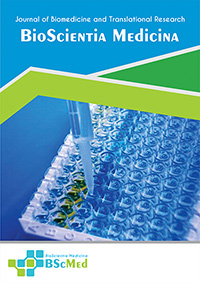Main Article Content
Abstract
Background: Impaired wound healing and subsequent infections represent a significant clinical and economic burden. Nutritional status, particularly high-quality protein provision, is a critical, modifiable determinant of healing outcomes. Whey protein (WP), a rich source of essential amino acids and unique bioactive components, has emerged as a promising adjuvant therapy.
Methods: We conducted a systematic review and meta-analysis adhering to PRISMA guidelines. We searched PubMed, Scopus, and Web of Science from January 2015 to December 2024 for clinical randomized controlled trials (RCTs) and preclinical controlled studies evaluating WP supplementation on wound healing and infection. Rigorous inclusion criteria led to the selection of seven studies (four clinical RCTs, three preclinical) for quantitative synthesis. Data were pooled using a random-effects model to calculate Standardized Mean Differences (SMD) for continuous outcomes and Odds Ratios (OR) for dichotomous outcomes.
Results: The meta-analysis of four clinical RCTs (n=340 patients) demonstrated that WP supplementation significantly accelerated wound healing (SMD = 0.78; 95% CI 0.45, 1.11; p < 0.0001) with moderate heterogeneity (I²=38%). Furthermore, WP significantly reduced the odds of wound infection by 48% (OR = 0.52; 95% CI 0.31, 0.87; p=0.01) with no heterogeneity (I²=0%). Preclinical synthesis (3 studies, n=62 animals) revealed a significant reduction in pro-inflammatory cytokines (TNF-α, IL-6) at the wound site (SMD = -1.15; 95% CI -1.67, -0.63; p < 0.0001).
Conclusion: This meta-analysis provides robust quantitative evidence that whey protein functions as an effective adjuvant therapy, significantly enhancing wound repair and providing clinically relevant infection control. These benefits appear to be mediated by a dual mechanism: providing essential anabolic substrates for tissue repair and exerting potent immunomodulatory and antioxidant effects via bioactive components like lactoferrin and cysteine.
Keywords
Article Details
As our aim is to disseminate original research article, hence the publishing right is a necessary one. The publishing right is needed in order to reach the agreement between the author and publisher. As the journal is fully open access, the authors will sign an exclusive license agreement.
The authors have the right to:
- Share their article in the same ways permitted to third parties under the relevant user license.
- Retain copyright, patent, trademark and other intellectual property rights including research data.
- Proper attribution and credit for the published work.
For the open access article, the publisher is granted to the following right.
- The non-exclusive right to publish the article and grant right to others.
- For the published article, the publisher applied for the Creative Commons Attribution-NonCommercial-ShareAlike 4.0 International License.





